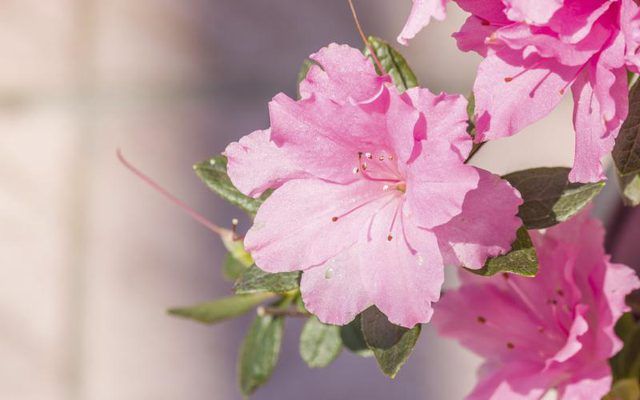Bulbs
Flower Basics
Flower Beds & Specialty Gardens
Flower Garden
Garden Furniture
Garden Gnomes
Garden Seeds
Garden Sheds
Garden Statues
Garden Tools & Supplies
Gardening Basics
Green & Organic
Groundcovers & Vines
Growing Annuals
Growing Basil
Growing Beans
Growing Berries
Growing Blueberries
Growing Cactus
Growing Corn
Growing Cotton
Growing Edibles
Growing Flowers
Growing Garlic
Growing Grapes
Growing Grass
Growing Herbs
Growing Jasmine
Growing Mint
Growing Mushrooms
Orchids
Growing Peanuts
Growing Perennials
Growing Plants
Growing Rosemary
Growing Roses
Growing Strawberries
Growing Sunflowers
Growing Thyme
Growing Tomatoes
Growing Tulips
Growing Vegetables
Herb Basics
Herb Garden
Indoor Growing
Landscaping Basics
Landscaping Patios
Landscaping Plants
Landscaping Shrubs
Landscaping Trees
Landscaping Walks & Pathways
Lawn Basics
Lawn Maintenance
Lawn Mowers
Lawn Ornaments
Lawn Planting
Lawn Tools
Outdoor Growing
Overall Landscape Planning
Pests, Weeds & Problems
Plant Basics
Rock Garden
Rose Garden
Shrubs
Soil
Specialty Gardens
Trees
Vegetable Garden
Yard Maintenance
Do You Have to Deadhead Azaleas?
Do You Have to Deadhead Azaleas?. Deadheading isn't necessary for all azaleas (Rhododendron spp.), but it encourages better flowering, helps prevent diseases and tidies up the plants. Azaleas grow in U.S. Department of Agriculture plant hardiness zones 4 through 9, and feature trumpet- or bell-shaped spring blooms that range from 1/2 inch wide to...

Deadheading isn't necessary for all azaleas (Rhododendron spp.), but it encourages better flowering, helps prevent diseases and tidies up the plants. Azaleas grow in U.S. Department of Agriculture plant hardiness zones 4 through 9, and feature trumpet- or bell-shaped spring blooms that range from 1/2 inch wide to more than 4 inches wide. Some azaleas are deciduous and some are evergreen, and the shrubs can be small- or large-leaved. The Ohio State University Extension advises that deadheading is only needed for deciduous and large-leaved evergreen azaleas. Pruning takes place at the same time as deadheading.
Encouraging Growth and Flowering
Deadheading azaleas removes the developing seed heads, and saves energy for growth and more flowers the following year. You can snap off the spent blooms, or use pruning shears if they don't break off easily. To prevent the spread of diseases, sterilize your pruning shear blades by wiping them with a cloth dipped in rubbing alcohol before and after deadheading and pruning azaleas. Break off or prune the flower at its base to make sure you remove the developing seeds. The base of the flower lies above the cluster of leaves. Spraying your hands with sprayable cooking oil helps to protect your skin when deadheading sticky shrubs. (Ref 6)
Preventing Diseases
Fungal diseases sometimes develop on azalea flowers, and deadheading helps prevents these diseases from spreading. During wet weather and humid conditions, azalea blooms can become infected with diseases that make them moldy and slimy. Ovulinia azaleae is a fungus that infects azaleas. Its tiny, irregular spots give flowers a freckled look. The spots grow larger and turn watery and soft, and blooms decay and stick to the leaves. Removing infected flowers provides the most effective control because the disease spreads from the blooms through rain, wind and insects. Removing leaf litter and mulch from beneath the shrubs and spreading a 2-inch layer of fresh mulch when flowering is over helps prevent the disease's return.
Tidying Up Azaleas
Deadheading and lightly pruning azaleas improves their appearance. When deadheading shrubs, snap off or prune single-growth buds at the ends of shoots. (Growth buds look like tightly compacted sets of leaves around a stubby stem.) This light pruning encourages more growth buds and creates a dense, bushy plant. Heavy pruning isn't needed as azaleas naturally grow into an attractive form, but you can prune shoots to shape the shrub. Prune at the desired length just above an outward-facing bud. Don't prune azaleas later than just after flowering because this removes the buds that form the next year's flowers.
Growing Azaleas
Azaleas flower and grow best in moist, acidic soil and sheltered sites in dappled shade. The shrubs have shallow roots, and disturbing the soil around the plants can damage them. Pull up weeds or cut them off at the soil surface, and spread a pine bark or hardwood chips mulch to conserve soil moisture. Water shrubs regularly in dry weather so the soil stays moist, and in spring apply a fertilizer for acidic plants, such as a liquid 30-10-10 product diluted at a rate of 1 tablespoon per 1 gallon of water, or according to the manufacturer's instructions.